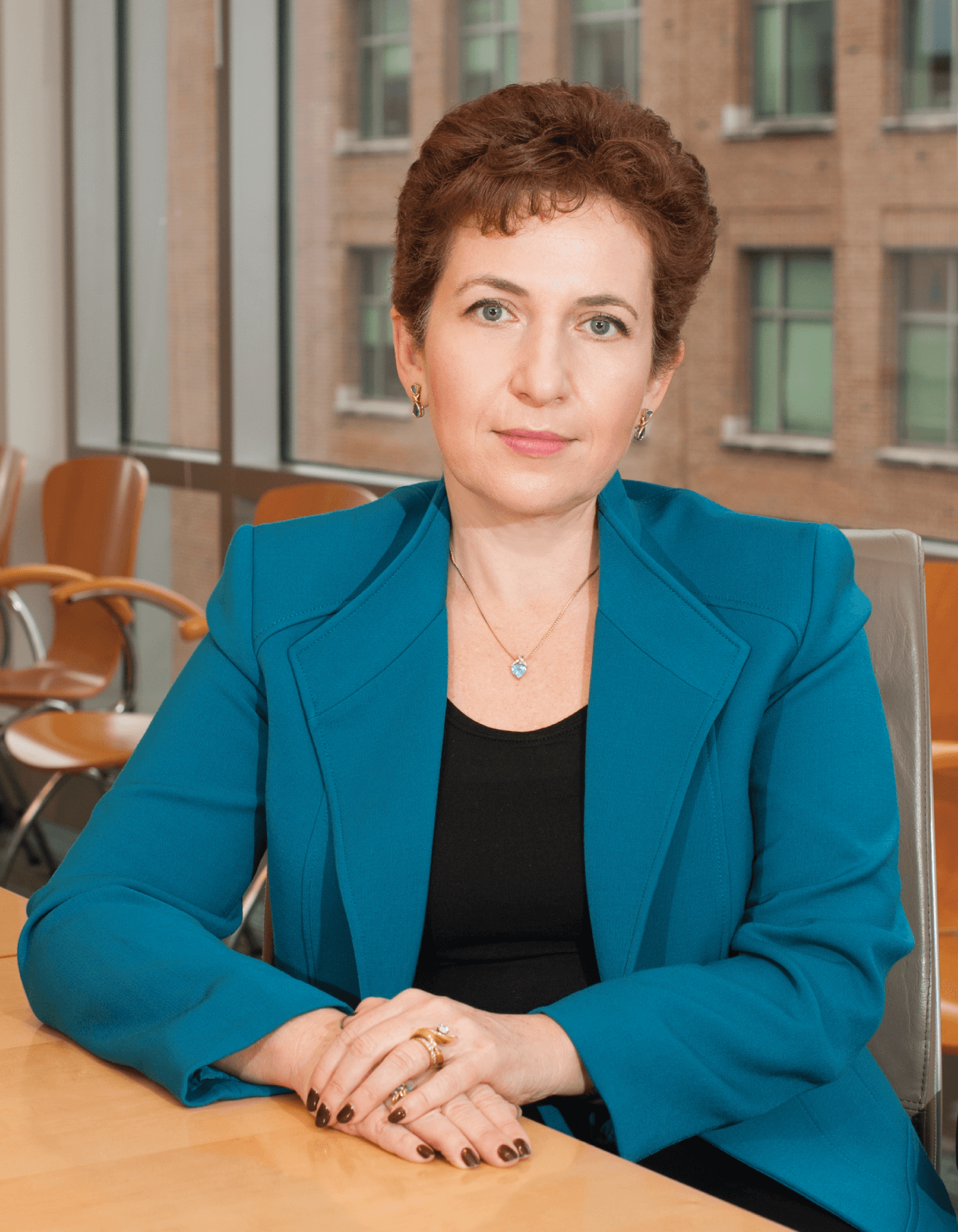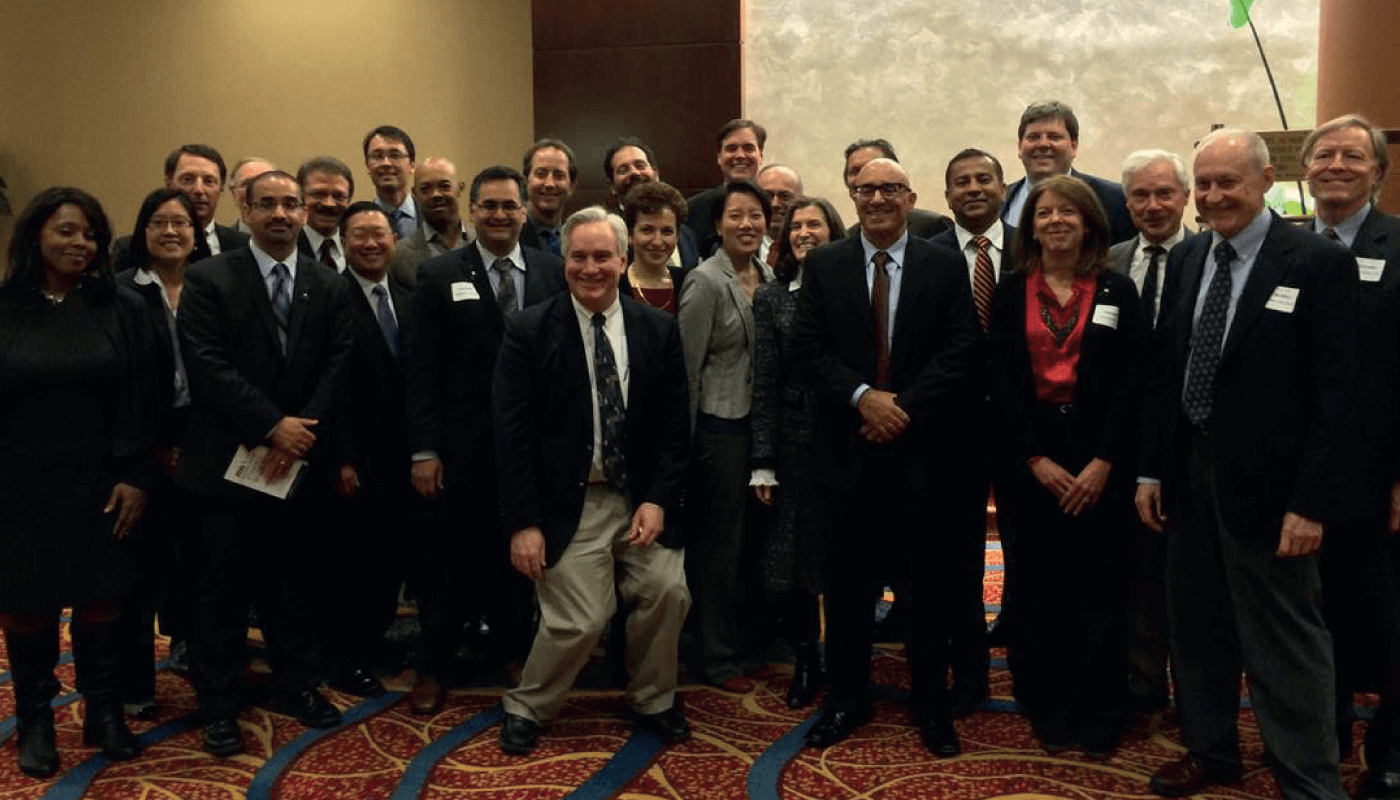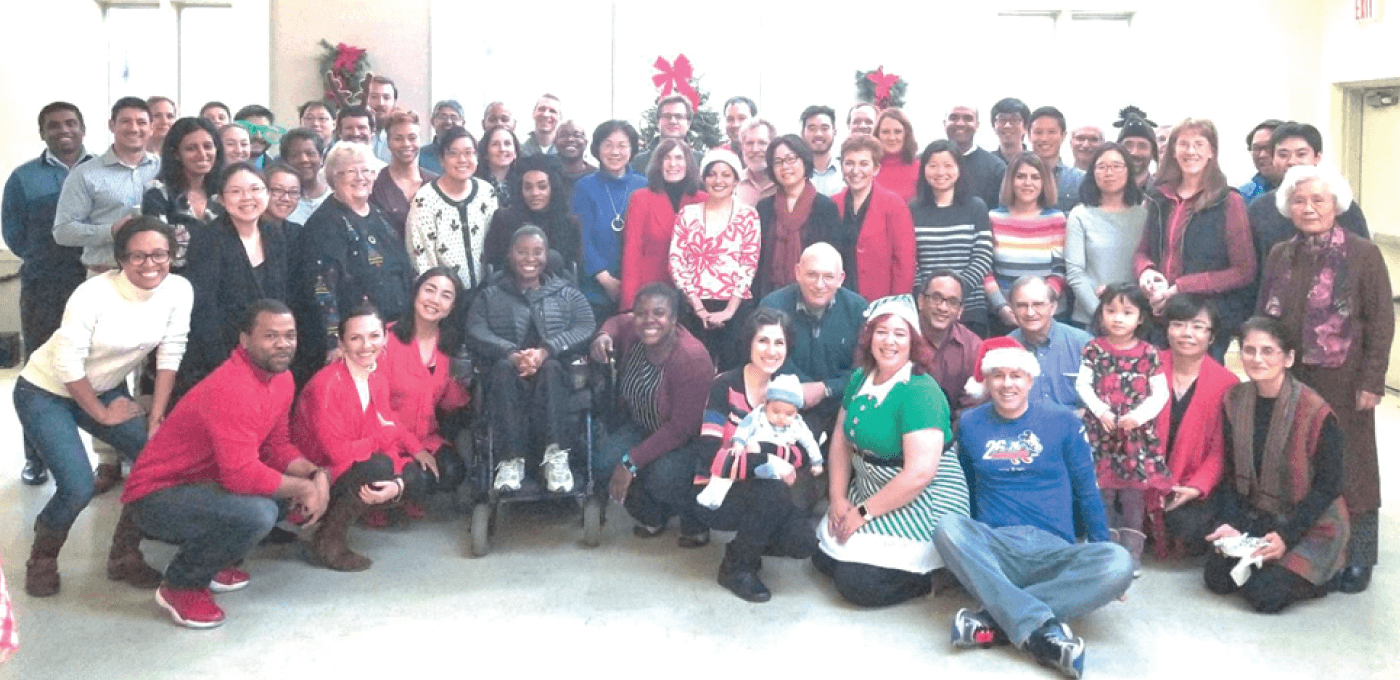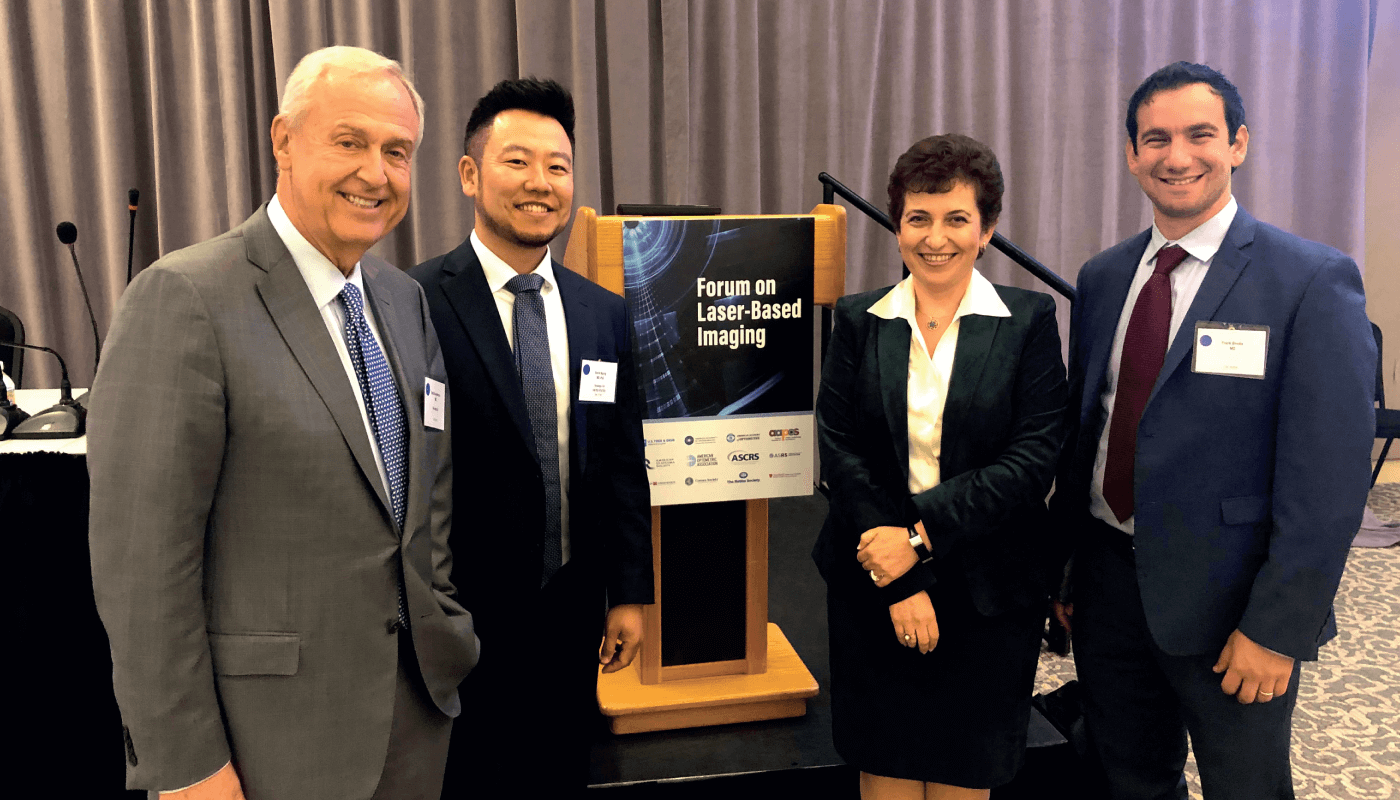
From electrical engineering to ophthalmic devices at the FDA – please share your route!
First, for context, I should take you back a little earlier to my childhood. I attribute my passion for applying technological advances to solve medical problems to the influence of my father – a medical school professor of biotechnology. As a child, I spent many hours with him in his lab, where he inspired me with his vision of eradicating medical diseases by creatively applying engineering and scientific principles.
I completed an undergraduate degree in electrical engineering, with a biomedical engineering minor at the Cooper Union in New York, USA. My undergraduate internships at National Organization for Rare Disorders and NY Hospital for Joint Diseases confirmed that I needed to obtain more medical knowledge to maximize my potential impact. Harvard-MIT Health Sciences and Technology program, my next educational milestone, provided me a unique opportunity to continue my quest to combine engineering and scientific knowledge with medicine. There, I discovered my love for ophthalmology. My graduating thesis covered a new ophthalmic technology, which was awarded a US patent.
After completing my residency in ophthalmology, I was attracted to the FDA’s Center for Devices and Radiological Health (CDRH), where I foresaw that serving as an ophthalmic medical officer would call on all of my skills in engineering and medicine and allow me to have a large impact on patients. At the beginning of my career, I served as a clinical reviewer and made recommendations about clinical investigations and marketing approval for every type of ophthalmic device. Additionally, as the US Expert Delegate to the International Standards Organization (ISO) and FDA’s Liaison to the American National Standards Institute’s (ANSI) Committee, I facilitated innovation by contributing to the development of more than 50 ISO and ANSI standards for ophthalmic devices.
As I advanced in management, my focus expanded to more areas of clinical practice and technology. I was appointed director of the Division of Ophthalmic and Ear Nose and Throat (ENT) Devices in 2006 and subsequently, director of the Division of Ophthalmic, Neurological, and ENT devices in 2009.
In 2019, CDRH completed reorganization, consolidating and integrating product review, quality, surveillance and enforcement programs into a new, team-based approach. Currently, as the Director of the Office of Health Technology 1: Ophthalmic, Anesthesia, Respiratory, ENT and Dental Devices, I am responsible for oversight of the total product lifecycle for the devices under my purview.
Which qualities make you good at this particular job?
I like to think of it as flying a helicopter with binoculars in my hand. While attention to detail is very important, it is imperative not to lose sight of the big picture: working to protect and promote the public health.

And if you weren’t working at the FDA, what would you be doing?
I would follow my passion for innovation – developing technologies that combine engineering and medicine to benefit public health.
What’s your greatest achievement?
One of my favorite quotes is by Walt Disney: “You can dream, create, design, and build the most wonderful idea in the world, but it requires people to make the dream a reality.”
Within the FDA, my greatest achievement is building an amazing, diverse team of nearly 150 staff, where everyone feels that they belong and their differences are valued, respected, and celebrated.
Beyond the FDA’s walls, my greatest impact has come from my collaborations with diverse stakeholders in the medical device ecosystem that created opportunities to integrate different perspectives, experiences, resources, and expertise.
I developed numerous multi-stakeholder symposia and workshops to facilitate medical device innovation; for example, i) The American Glaucoma Society/FDA Workshop: Supporting Innovation for Safe and Effective Minimally Invasive Glaucoma Surgery (MIGS), which provided essential input for the FDA’s Leap Frog MIGS Guidance; ii) The FDA/AAO Workshop on Developing Novel Endpoints for Premium Intraocular Lenses (IOLs), which resulted in the first regulatory definition of extended depth of focus IOLs and publication of FDA/AAO Task Force’s consensus statements for premium IOLs; and iii) The Ophthalmic Digital Health Workshop convened by six collaborating organizations, which allowed elucidation of a number of key digital health issues. Shortly thereafter, the first artificial intelligence device capable of diagnosis without physician input received FDA authorization.
In addition to partnering with professional organizations, healthcare providers, and industry, I am especially proud of my role in including patients as a critical partner in our collaborative efforts.
As a Principal Investigator for the FDA/National Institutes of Health/Department of Defense LASIK Quality of Life Collaboration Project, I led the development of a web-based patient reported outcome measure (PROM) for LASIK patients, known as PROWL. The experience gained from developing PROWL was used to develop another PROM for premium IOLs, which is now nearing completion. I am also leading the FDA’s collaboration with Johns Hopkins University and the University of California, San Francisco/Stanford Centers of Excellence in Regulatory Science and Innovation to determine patient preferences and develop a PROM for glaucoma patients.

What’s the best part of your job – and what is the worst?
The best part is the knowledge that, when I make a good decision, the lives of millions of patients are made better.
The worst part is having to deny marketing of medical devices that do not demonstrate adequate safety or efficacy after significant resource investment by the manufacturers. Finding a potential path forward for these manufacturers to market quality, safe, and effective devices is something to which I often devote my effort and experience.
What keeps you up at night?
Most of our employees have dedicated an incredible number of hours to the COVID-19 response, in addition to performing their existing responsibilities at the FDA. I fear that my team’s commitment to public health might push them to put their own physical and mental health at risk. As a result, I attempt to manage individual workloads and implement team-building activities to improve work-life balance.
What excites you most about ophthalmology right now?
The data-rich and image-dependent specialty of ophthalmology has been a natural match for digital health innovations. As such, ophthalmology has been leading the development of novel medical devices that use artificial intelligence and machine learning – devices that are fundamentally transforming the delivery of healthcare.
The FDA’s collaboration with diverse stakeholders is the key to achieving our goal of ensuring that patients and providers have timely and continued access to safe, effective, and high-quality medical products. To that end, I was delighted when the FDA joined the newly formed Collaborative Community on Ophthalmic Imaging (CCOI). In addition to the FDA, current members of CCOI include ophthalmic professional organizations from around the world, medical device companies, and patient advocacy groups. CCOI was formed to advance innovation of ophthalmic imaging with a focus on medical devices that use artificial intelligence.
I believe that generating worldwide consensus is essential for expediting responsible innovation of artificial intelligence devices based on ophthalmic imaging. CCOI is well positioned to do just that.
Who has inspired you?
Ophthalmologists who have been able to look outside the box and revolutionize the field, like Harold Ridley and Charles Kelman.
What makes you happy outside of work?
I love traveling, reading, hiking, biking, dancing, growing flowers, painting… Whether flying in a hot air balloon over a desert, sailing past the Rock of Gibraltar, taking a long walk on a beach or painting quietly at home, it is wonderful – especially when I am joined by my family and friends.
How have you fared during the pandemic?
My greatest challenges during the pandemic surfaced as the great need for ventilators and other respiratory devices outpaced the supply available to healthcare facilities in the early months of this public health emergency.

For my team, it became an all-hands-on-deck response. We proactively assessed and began modifying policies to help expand the supply of ventilators in the US. We issued a March 22 regulatory policy stating the FDA would not object to manufacturers marketing certain modifications to ventilators and supporting accessories without first submitting the changes to the FDA for evaluation “where the modification does not create an undue risk in light of the public health emergency.” The policy also permitted healthcare professionals to use “alternative devices capable of delivering breaths or pressure support” outside of the devices’ indications for use previously authorized by the FDA. Our message with this policy was clear: if companies “want to help expand production of ventilators to save American lives in this pandemic, we are going to work with you to make it happen.”
My team leveraged the FDA’s emergency use authorization pathway, a unique legal authority during certain national emergencies, to encourage and streamline the introduction of new and innovative ventilators to address projected public health needs. For us, this meant quickly training ourselves on a new process and figuring out how to implement appropriate workflows. All of this work was in addition to our normal workload.
My team provided tireless regulatory guidance and support to traditional and non-traditional manufacturers to expeditiously bring lifesaving ventilators to market.
We created a virtual war room where we met twice a day to plan and organize our crisis response. We communicated our progress and plans to our leadership every morning, afternoon, and evening – seven days a week.
In addition to respiratory devices, my team developed policies with regulatory flexibility to help expedite access to a number of other devices under our purview. One of these was our guidance for remote ophthalmic assessment. This policy addressed the need for increased access to medical devices that allowed ophthalmologists to monitor and assess patients remotely during the pandemic.
I am very proud of my team’s response to this crisis. It has been unprecedented in terms of volume, speed, and agility.
What piece of advice would you have given yourself at the start of 2020, if you knew COVID-19 was going to strike?
I would have taken a long vacation with my family so we could store up happy memories and a sleep reserve!
What do you think will be the long-term effects of the pandemic?
In the post-COVID-19 world, use of digital health will be the “new normal.” I expect to see a very large number of companies rapidly entering the digital health space in all devices under my office’s purview.
Potential long-term sequelae of the pandemic are just starting to be understood. However, it is likely that COVID-19 survivors will result in a population of millions with life-long impact on the respiratory system. I anticipate that this may stimulate innovation in medical devices addressing chronic lung impairment.
